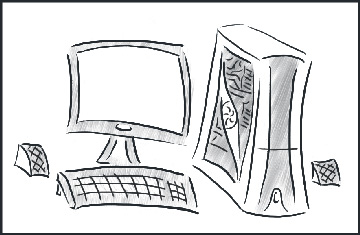The Art of Programming the Impossible
by David Stoddard

My favorite scene in a movie is when the great Basil of Baker Street is tied to a mouse trap with his assistant Dr. Dawson: a pistol primed and ready to blast them, an anvil hanging over head by a string, a crossbow's tip pointed towards them, and the sharpened executioner's axe ready to end our heroes. The mocking music plays as our hero appears defeated, and then it happens. Dr. Dawson gives our hero an idea; set it all off early.
Our mad hero's brain goes into action as they only have seconds before a simple marble sets the whole death trap off. Basil calculates trajectories, an isosceles triangle, opposing forces, and differences in equilibrium. He sets the mouse trap off early. It catches the marble. Flings a pin into the pistol. The pistol misfires at the crossbow. The bolt from the crossbow takes the head off of the axe. The axe head falls to free the heroes and pushes them to the sides. The anvil falls where they were a second earlier. He then catches a young maiden in distress, and right before the flash of a camera our hero ends with the line, "Smile Everyone."
This scene from Walt Disney's Great Mouse Detective helps captivate what I enjoy in programming long before I was introduced to programming. It starts with an impossible problem. It stares you in the face and challenges you, and you feel your adrenaline rise. You begin to break the parts down into pieces: a mouse trap, a pistol, an anvil, a crossbow, an axe, and an small steel ball. You focus on a simple piece of the puzzle and manipulate it into place. You then move to the next piece using the pieces already in place. Through these simple actions you cascade events into a grand masterpiece with a smile on your face.
The topic of Mathematics is were I first began to enjoy using logic and problem solving, and when I went to college I began exploring mathematics and engineering majors. It was during this time I was introduced to programming. I increased my problem solve skills, and I learned to think differently.
Another topic I gravitated towards was art. This was manifest when we made a virtual computer in my second programming class. As other students used the default rectangle graphics I sculpted my simple adding calculator into a plus sign and the virtual computer into a space station.
These opposing disciplines that use different sides of the brain made it difficult to find my place. Together they led me to animation with a focus on programming. I found ways to meld logic and art so they can work together. It provided me skills to design and program a website for a company and this website as well.
As I continue to learn, I am finding more and more ways to solve my impossible problem. I am taking the elements of art and programming segments and using them together to create something wonderful for everyone to smile about.

